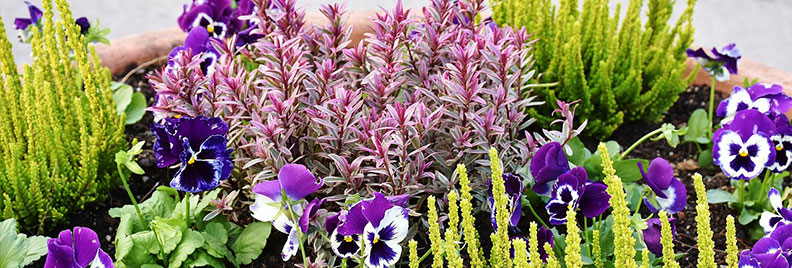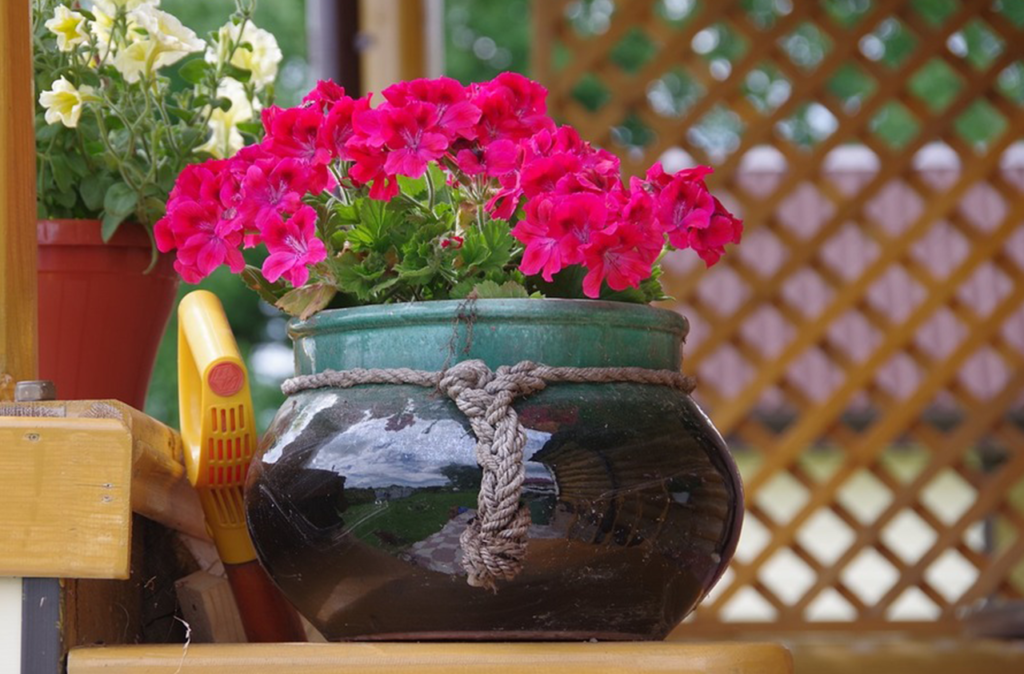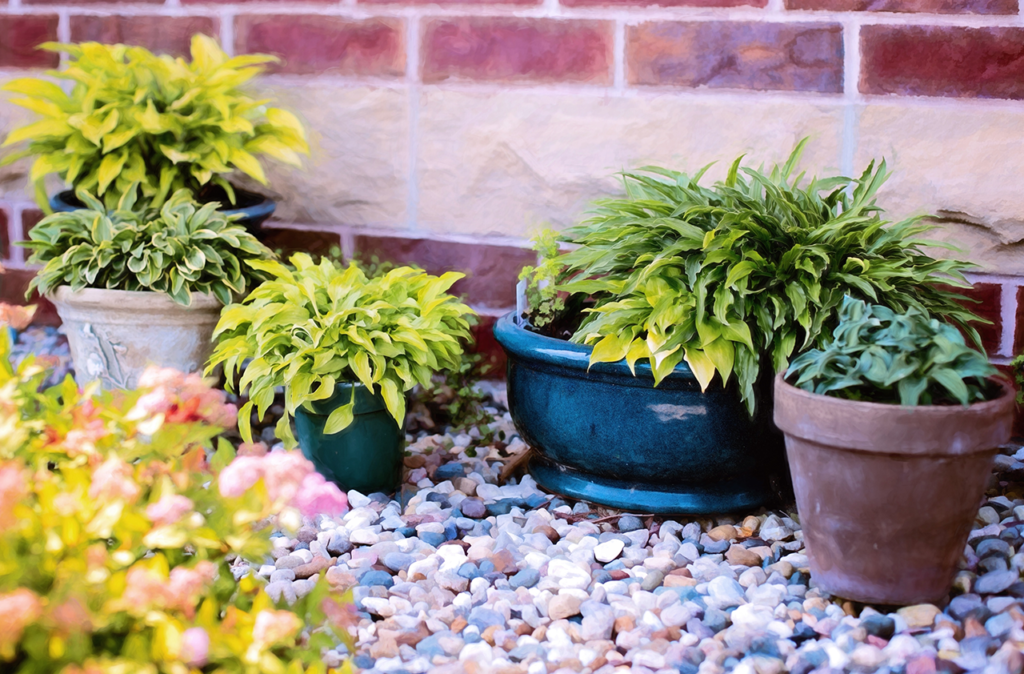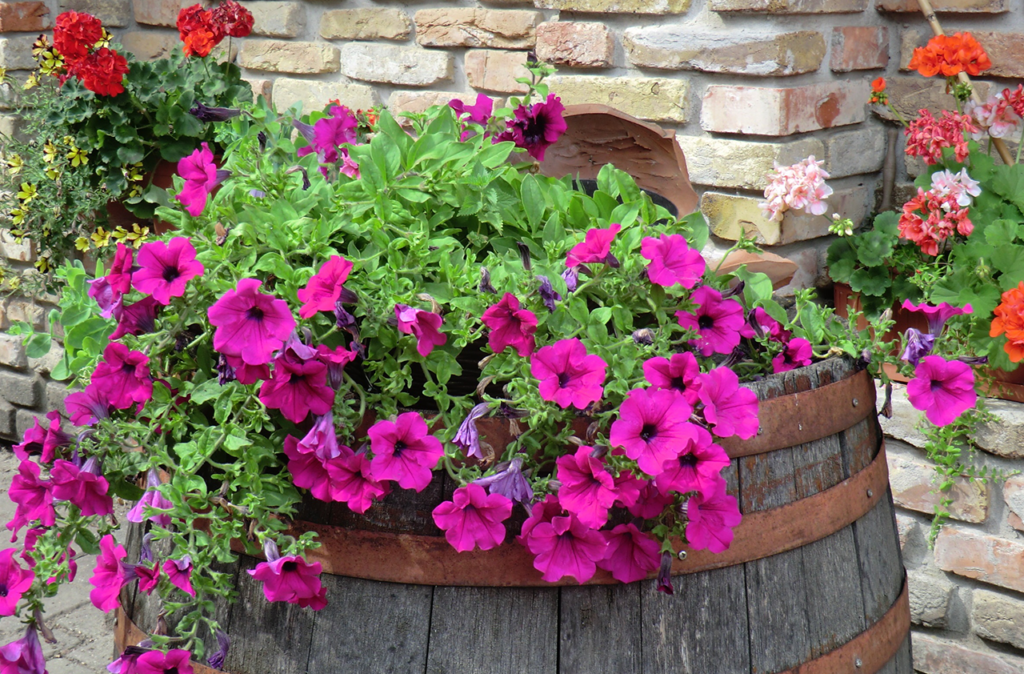
Container Gardening 102: Exposure
Planning Your Garden
Full Shade Plants
Partial Sun Plants
Full Sun Plants
Probably one of the most frequently asked questions we get at the garden center—and frankly, one of the most important—is about sunlight. While it can be easy as pie to find the right plants to suit some spots in your yard, others seem to be made to kill everything that is planted there. And like picking bridesmaids’ dresses, once you finally find something that works, you feel stuck with that choice simply because it took so long to choose. But, it doesn’t need to be that way!
Think of our garden center like the UN of plants. Everything you see on our shelves has been pulled from all over the globe, and a deep jungle native can often be found right next to a desert dweller.
Planning Your Garden
Before you head out to the garden center, take a stroll outside and have a good look at where you want your container to live. Take note of when the sun shines, how bright it is, and other things to note, like whether the white siding of your home reflects heat over the space or whether a large water feature may counteract the harsh sun with some added moisture.
Generally speaking, the most intense sunlight your garden will see will be between 3 and 5 PM. If your spot sees the sun from dawn until noon, but not again until the evening (perhaps with a large, southwest-facing tree nearby), you can happily plant part shade or even full shade plants! However, if your space only sees the sun between 2 and 5 PM (maybe there’s a gap between the houses), plants that prefer the shade will burn up. These spots tend to be the trickiest since full-sun plants won’t get as much as they need.

Full Shade Plants
If the plant tag says “full shade” or shows a cloud and no sun, it’s going to need plenty of shelter from the sun. These plants can come from all over, but tend to come from deep forests or jungles where little sunlight breaks through the canopy to the ground.
Regardless of whether the tag actually says “full shade,” though, it’s important to remember that all plants need the sun to survive. It’s not the actual light they are looking to hide from, but rather the intensity of the exposure they need protection from. New Guinea Impatiens may claim to be darkness dwellers, but given enough humidity, they have been known to grow in south-facing spots with ease! In the end, it’s all about testing the waters—or, rather, the sun rays—and figuring out what grows best in the different spots in your garden.
Something to remember, though: when planting full shade plants, you’re going to want to find a spot that has both shelter from the sun and air circulation. It can be tricky to find that combo, but it’s important for preventing powdery mildew from setting in.


Partial Sun Plants
If the plant tag says “partial sun” or shows a cloud with the sun peeking out, the best spot to place this plant is a spot with morning exposure. Partial sun doesn’t mean sun only covering part of the plant, it means that the plant will still need a good amount of light, but just can’t stand to sit through the heat of the afternoon sun.
Dappled afternoon sun works well, too, and we find planting by a tree that will filter the sun works great! Another way to get this dappling effect would be to plant on the north side of a bigger full-sun-lover, who’ll keep your more sunburn-prone plant protected.

Full Sun Plants
If the plant tag says “full sun” or shows a bright, bold, uncovered sun, this means you’ve got a plant that needs a minimum of 6 hours of good sun exposure for best performance. Even just slightly less than that and you may start to see it’s originally compact and beautiful shape turning leggy and pale pretty quickly as it desperately seeks out more sun.
One of the best things about full sun plants is that many of them are also drought-tolerant. This makes them great choices for decks or patios that face south, or even next to a white siding that reflects the sun. They won’t mind if their soil dries out a little more quickly in these areas.
When putting together containers, picking your spot is just as important as picking your plants. Without the right conditions, your plants can suffer and you’ll end up with a pot that is a little more ‘lack’ than ‘lustre’. With a little exposure know-how and proper planning, though, you can have a yard filled with beautiful, blooming containers all season long without any sunburn in sight!
